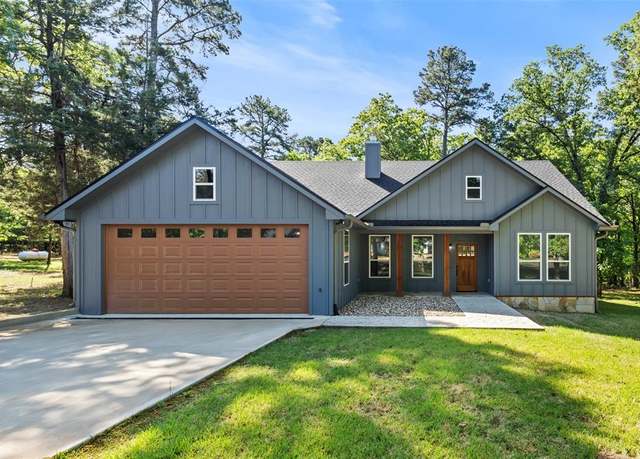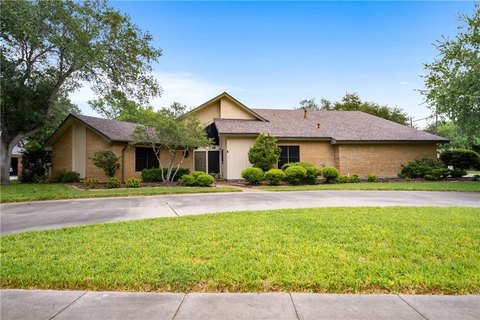When Emma first visited the small, sun-drenched bungalow by the lake, she was instantly taken by its cozy charm. The single-story home had all the features she had dreamed of—large windows that flooded the living room with natural light, a spacious front porch perfect for morning coffee, and a lush garden that made her feel as if she had stepped into a serene sanctuary. It was the kind of house that whispered relaxation, comfort, and simplicity.
Having lived in tall apartment buildings for most of her life, Emma had always imagined owning a sprawling mansion or a penthouse in the city. But there was something about this bungalow that called to her—a sense of quietude and ease that seemed perfect for this new chapter of her life. As she stood in the front yard, looking out at the lake, she realized that this humble, single-story house might be exactly what she was looking for: a bungalow, a timeless symbol of comfort, practicality, and connection to nature.
In this article, we will explore the appeal of bungalows—why they have stood the test of time, the history behind their design, and why they are making a comeback today. We’ll also delve into key trends in bungalow living, the growing demand for smaller, single-story homes, and the factors influencing their popularity in modern real estate.
What is a Bungalow?
The word “bungalow” originates from the Bengali word “bangla,” referring to a type of house built in the Bengal region of India. In the 19th century, British colonists in India adopted the design for its practicality—single-story homes with large verandas were well-suited to the warm, tropical climate. The design concept eventually traveled to the West, where it became associated with simple, low-slung houses that emphasized single-level living, open floor plans, and an intimate connection to the outdoors.
Today, a bungalow typically refers to a one-story home that is compact yet comfortable. The defining features of a bungalow often include:
- Single-story design: The most notable characteristic is that bungalows are one-story homes, which appeal to people who prefer not to deal with stairs.
- Open floor plan: Bungalows often feature an open and flowing interior layout with fewer walls, making them feel larger and more airy than they might actually be.
- Front porch or veranda: Many bungalows include a porch, often wrapping around the front or extending along the side of the home, encouraging outdoor living.
- Low-pitched roof: Bungalows typically have low, wide roofs with eaves that overhang the structure, providing shade and protection from the elements.
- Connection with nature: Large windows, sliding doors, and an emphasis on landscaping make bungalows ideal for those seeking a home that feels connected to the outdoors.
Bungalows: A Resurgence in Popularity
While bungalows were especially popular in the early 20th century, the rise of multi-story homes in the post-World War II era led to their decline in favor of larger, more complex houses. However, in recent years, there has been a noticeable resurgence in the demand for bungalows, driven by changing lifestyle preferences and demographic shifts.
A report from the National Association of Home Builders (NAHB) indicates that in 2020, single-story homes represented more than 50% of all newly constructed homes in the U.S. (NAHB, 2020). This shift toward single-story homes reflects growing interest in aging in place, smaller living spaces, and more efficient home designs. Many buyers today are seeking the convenience of a one-level home that allows for easy mobility and low-maintenance living.
The Appeal of Bungalows
Several factors contribute to the renewed popularity of bungalows, making them an attractive option for a variety of homeowners.
1. Accessibility and Aging in Place
One of the primary reasons bungalows have become so desirable is their ability to cater to aging homeowners. As the population in many developed countries continues to age, there is an increasing demand for homes that are easy to navigate, with no stairs to climb. According to a 2019 AARP study, nearly 90% of seniors want to stay in their homes as they age, and many are specifically looking for homes with single-story layouts to accommodate mobility challenges (AARP, 2019).
Bungalows are also appealing to people with disabilities or those who prefer a home without stairs. A single-story layout offers a safer and more accessible environment, reducing the risk of accidents or falls, which is a common concern for the elderly.
2. Efficient Use of Space
While bungalows are generally smaller than multi-story homes, their efficient use of space makes them an attractive choice for families and individuals looking to downsize. The open floor plans commonly found in bungalows help to maximize space, making even smaller homes feel more expansive.
According to the U.S. Census Bureau, the average size of newly constructed homes has been steadily increasing over the years, with many homes now exceeding 2,500 square feet (U.S. Census Bureau, 2020). However, this trend has been met with a growing desire for smaller, more manageable homes that focus on quality of living rather than quantity. Bungalows, with their cozy footprints, offer a practical and livable alternative.
3. Connection to Nature and Outdoor Living
Bungalows are ideal for homeowners who value an indoor-outdoor lifestyle. With large windows and often expansive front or back porches, bungalows seamlessly connect indoor living spaces with outdoor areas. Whether it’s a garden, a small backyard, or a patio, the bungalow’s design encourages spending time outside, embracing nature, and enjoying fresh air.
This focus on outdoor living is a trend that has grown in importance in recent years. According to a 2021 survey by the National Association of Realtors, more than 60% of homebuyers cited outdoor space as one of the most important factors in their home search, with many seeking properties that offer private gardens and outdoor entertainment areas (National Association of Realtors, 2021).
Bungalows and Sustainability
In addition to their accessibility and space-efficiency, bungalows are increasingly being designed with a focus on sustainability. Many modern bungalows incorporate eco-friendly materials, energy-efficient systems, and green technologies to reduce their environmental impact.
For instance, many bungalows are being built with solar panels, rainwater harvesting systems, and high-performance insulation to help lower energy consumption and water usage. Additionally, some bungalows are designed to take advantage of passive solar heating by positioning windows in such a way that they maximize natural light and warmth throughout the day.
Sustainability is becoming an increasingly important factor for homebuyers. According to a 2020 survey by the U.S. Green Building Council, nearly 80% of buyers expressed interest in homes with energy-efficient features, such as solar panels, energy-efficient appliances, and smart home technologies (U.S. Green Building Council, 2020). Bungalows are well-suited to meet these preferences due to their typically smaller square footage, making it easier to install sustainable features.
The Global Appeal of Bungalows
While bungalows have always had a strong presence in the United States and parts of Europe, they are also becoming increasingly popular in other parts of the world. In countries like Australia, New Zealand, and Canada, bungalows are seen as practical, efficient homes that provide the perfect balance of comfort and affordability.
In particular, coastal areas and regions with tropical climates have seen a surge in bungalow construction. Bungalows are well-suited to warmer climates due to their single-story design and connection to outdoor living. In places like Hawaii or Florida, bungalows are often designed to take advantage of sea breezes and natural ventilation, making them ideal for year-round living in warmer temperatures.
Conclusion: A Return to Simplicity
As the world continues to evolve, the timeless appeal of the bungalow remains. Whether as a first home, a retirement retreat, or a vacation escape, bungalows offer the perfect combination of practicality, comfort, and charm. Their simple, single-story design allows for easy living, making them especially appealing to a growing number of people seeking more manageable spaces and a closer connection to nature.
With the increasing focus on sustainability, accessibility, and efficient use of space, bungalows are proving to be more than just a passing trend—they are a practical solution to the housing needs of today’s world. Whether nestled in the suburbs, perched on a hillside, or by the sea, the bungalow’s enduring popularity is a testament to its timeless charm.












 Afrikaans
Afrikaans Shqip
Shqip አማርኛ
አማርኛ العربية
العربية Հայերեն
Հայերեն Azərbaycan dili
Azərbaycan dili Euskara
Euskara Беларуская мова
Беларуская мова বাংলা
বাংলা Bosanski
Bosanski Български
Български Català
Català Cebuano
Cebuano Chichewa
Chichewa 简体中文
简体中文 繁體中文
繁體中文 Corsu
Corsu Hrvatski
Hrvatski Čeština
Čeština Dansk
Dansk Nederlands
Nederlands English
English Esperanto
Esperanto Eesti
Eesti Filipino
Filipino Suomi
Suomi Français
Français Frysk
Frysk Galego
Galego ქართული
ქართული Deutsch
Deutsch Ελληνικά
Ελληνικά ગુજરાતી
ગુજરાતી Kreyol ayisyen
Kreyol ayisyen Harshen Hausa
Harshen Hausa Ōlelo Hawaiʻi
Ōlelo Hawaiʻi עִבְרִית
עִבְרִית हिन्दी
हिन्दी Hmong
Hmong Magyar
Magyar Íslenska
Íslenska Igbo
Igbo Bahasa Indonesia
Bahasa Indonesia Gaeilge
Gaeilge Italiano
Italiano 日本語
日本語 Basa Jawa
Basa Jawa ಕನ್ನಡ
ಕನ್ನಡ Қазақ тілі
Қазақ тілі ភាសាខ្មែរ
ភាសាខ្មែរ 한국어
한국어 كوردی
كوردی Кыргызча
Кыргызча ພາສາລາວ
ພາສາລາວ Latin
Latin Latviešu valoda
Latviešu valoda Lietuvių kalba
Lietuvių kalba Lëtzebuergesch
Lëtzebuergesch Македонски јазик
Македонски јазик Malagasy
Malagasy Bahasa Melayu
Bahasa Melayu മലയാളം
മലയാളം Maltese
Maltese Te Reo Māori
Te Reo Māori मराठी
मराठी Монгол
Монгол ဗမာစာ
ဗမာစာ नेपाली
नेपाली Norsk bokmål
Norsk bokmål پښتو
پښتو فارسی
فارسی Polski
Polski Português
Português ਪੰਜਾਬੀ
ਪੰਜਾਬੀ Română
Română Русский
Русский Samoan
Samoan Gàidhlig
Gàidhlig Српски језик
Српски језик Sesotho
Sesotho Shona
Shona سنڌي
سنڌي සිංහල
සිංහල Slovenčina
Slovenčina Slovenščina
Slovenščina Afsoomaali
Afsoomaali Español
Español Basa Sunda
Basa Sunda Kiswahili
Kiswahili Svenska
Svenska Тоҷикӣ
Тоҷикӣ தமிழ்
தமிழ் తెలుగు
తెలుగు ไทย
ไทย Türkçe
Türkçe Українська
Українська اردو
اردو O‘zbekcha
O‘zbekcha Tiếng Việt
Tiếng Việt Cymraeg
Cymraeg isiXhosa
isiXhosa יידיש
יידיש Yorùbá
Yorùbá Zulu
Zulu